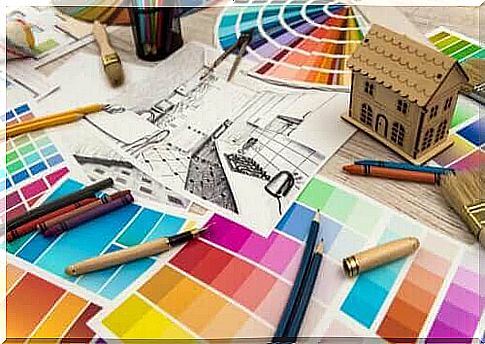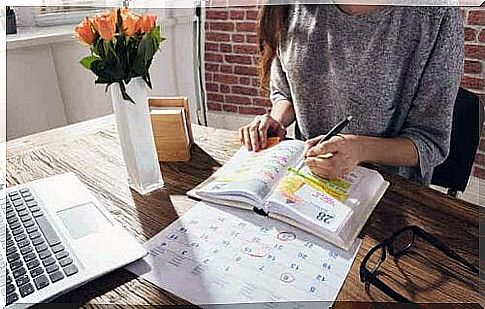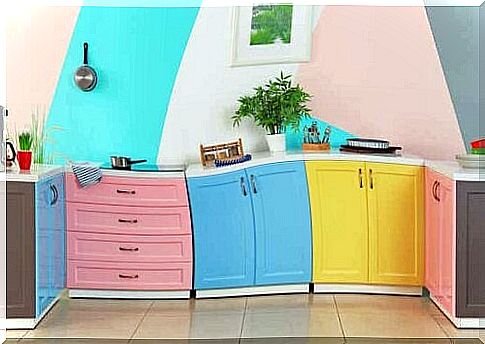8 Common Interior Mistakes

Sometimes people buy furniture and other items for their home that just don’t fit. In this article, we explain eight common interior design mistakes people make. In this way you can prevent them and solve existing problems.
Everyone wants a beautiful home where they feel comfortable and which reflects their personal style. While personal taste and comfort should be paramount in furnishing, certain ground rules can lead the way to creating harmonious and pleasant spaces.
Sometimes it’s easy to make small changes to make a room look completely different. It is important to prevent common interior errors
The 8 most common interior mistakes
Your home is a reflection of your personality and taste. You spend much of your private life there. It is therefore important to feel comfortable at home.
Even if you try your hardest, your home may not turn out the way you wanted it to, and you may not know why. The common interior design mistakes below can give you an idea of what you’re doing wrong.
1. Not planning the decoration

When it comes to moving or renovating your home, you need to have a plan that allows you to design and evaluate the characteristics of each room. Even if you don’t have the budget to hire a professional interior designer, don’t take spatial planning lightly.
As a result, there may be several mismatched decorative elements that often don’t match or match your spaces. This will leave you feeling frustrated and dissatisfied. However, if you plan on a budget and educate yourself about the basics of interior design, you will enjoy better results.
2. Not paying enough attention to the lighting
Lighting is one of the most important factors in making interior mistakes. The most common mistake in this regard is poor lighting. However, spaces can also be overexposed or the light can emphasize less flattering areas of your home.
Some people also make the mistake of combining different brightnesses of lamps. Lighting is essential for spaces and for tasks that require visual activity. This is stated in the “Practical Lighting Manual” of Ediciones UC (Spanish link).
- You should start by evaluating the general lighting of an area to determine how much light the area needs.
- You can then add more light to the spaces you want or need to stand out, such as a workspace or reading nook.
- You also need to evaluate the shadows that the light sources will generate. For example, it is not convenient to install only spotlights in the ceiling of the bathroom, because they create shadows on the face.
3. Neglecting the proportions
Ignoring the correct scales and proportions in spaces is one of the common interior design mistakes as it is usually a complex issue. It is therefore important to include the following points in your design:
- Placing many large elements in a room makes it appear small.
- Filling a room with all kinds of small objects, on the other hand, makes it look cluttered.
The key to solving this problem is achieving balance. To create a harmonious whole, you have to mix and match different sizes and shapes.
- If you have a large house, avoid decorating it with only large elements.
- The same goes for a small apartment.
4. Don’t pick a focal point
According to Julio Madrigal ‘s ” Practical Guide to Interior Mistakes and Decoration ” (Spanish link), every room should have a focal point. It is common for the activity in the room to take place there. In a dining room, for example, the dining table with chairs is central.
If you do not take this center into account, the largest object usually attracts attention, such as a sofa or the bed. This can be counterproductive in certain cases.
That’s why it’s important to pick a focal point in each room and decide which elements you want to stand out and which you don’t. For example, a work of art is a good option as a focal point.
5. Block the passage
To achieve a good interior design, you need to place elements in such a way that they facilitate free passage. Placing furniture that hinders movement is one of the most common interior design mistakes…and also one of the easiest to fix!
All you have to do is draw a room several times and plan different designs. Then choose the design that facilitates the flow the most.
6. Excess furniture and decorative elements
Many homes are cluttered with too much furniture and decorative elements. It can be difficult to keep family heirlooms if you don’t know where to put them and they end up cluttering the room. In interior design, it is essential to evaluate objects based on their contribution to space, usability or aesthetics.
Even in a kitsch decor, which is very opulent, the elements must have a certain style and decorative intention. If you want to make sure your home is well appointed, try not to overlook anything. Evaluate which furniture and decorative elements you no longer like or which no longer contribute to the decoration.
7. Not using enough furniture and decorative elements
While minimalist design consists of using only a few elements, one of the most important principles is to make sure they are all functional. One of the major interior design mistakes is when your furniture and decorative elements don’t fulfill specific organizational functions.
If there are not enough furniture and elements, you may experience awkward situations, such as not having a place to store your keys and coat when you get home. These situations completely ruin the style of your home because they create chaos. It is best to apply the popular saying “Everything in its place”.
8. Follow trends without thinking about your own taste

One of the most common interior design mistakes is trying to follow the latest trends and listen to the opinions of others without asking yourself what you like best.
Renowned Spanish interior designer Susanna Cots has said in several interviews that emotional interior mistakes are very important. Emotional interior design means the therapeutic influence of the design of spaces.
This designer points out that certain types of interior elements, such as scents, colors, divisions and light, influence the mood. Many of these aspects are linked to personality. Therefore, you should base the decoration of your home on your emotions and comfort. Apply only the trends you like.
What can you do to avoid interior mistakes?
Knowing what not to do is a good starting point for understanding what works and what doesn’t in interior design. Remember that the most important thing is that you feel comfortable and satisfied with the decor and style of your home at home. Here are some essential points to keep in mind:
- Find inspiration online, on social media and in magazines. In our interior section you will even find various articles with the best tricks, tips and trends.
- Take advantage of natural light. Let natural light illuminate your home, especially in workspaces.
- Buy quality furniture and elements. If you are considering investing in new furniture or decorative elements for your home, you need to make sure they are of good quality.
- Give away what you don’t use (anymore). For example, you can use the well-known Marie Kondo technique. Donate anything that doesn’t evoke positive emotion or serve any purpose.
Experiment to avoid interior mistakes!
Now that you know the most common interior design mistakes, you can start evaluating your own home. You will undoubtedly make a few mistakes before you achieve a harmonious design.
Try to be flexible and allow yourself to make changes. Having the resources to seek professional advice is a worthwhile investment in avoiding interior design mistakes.








